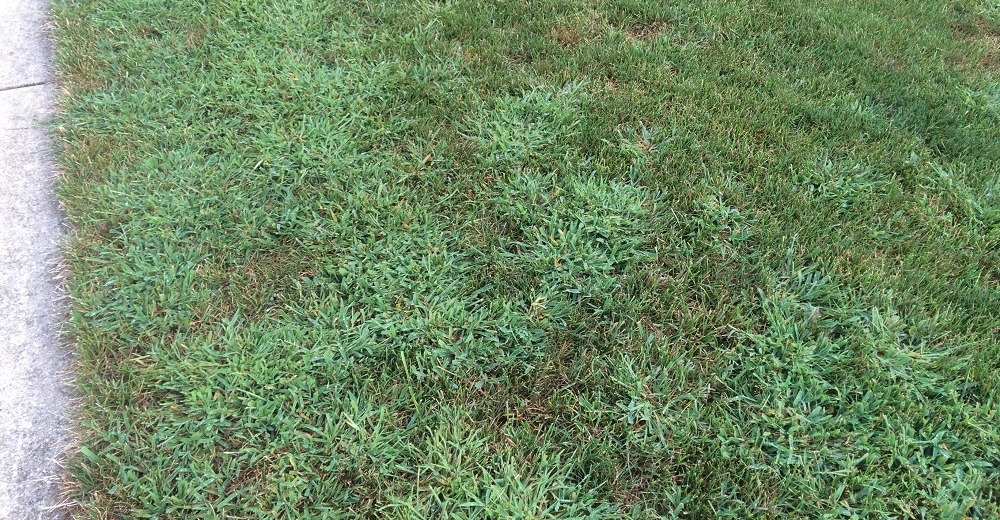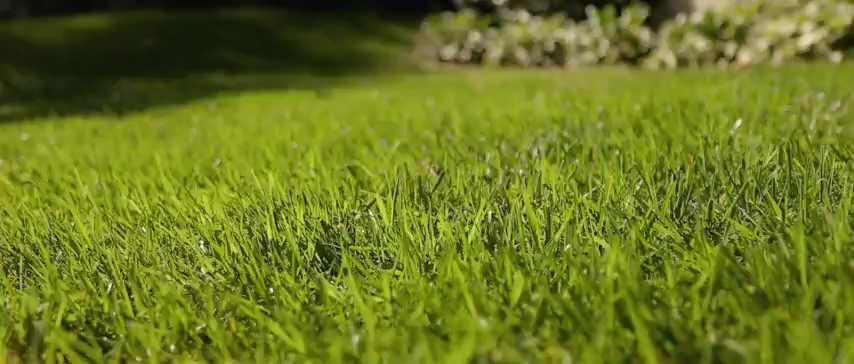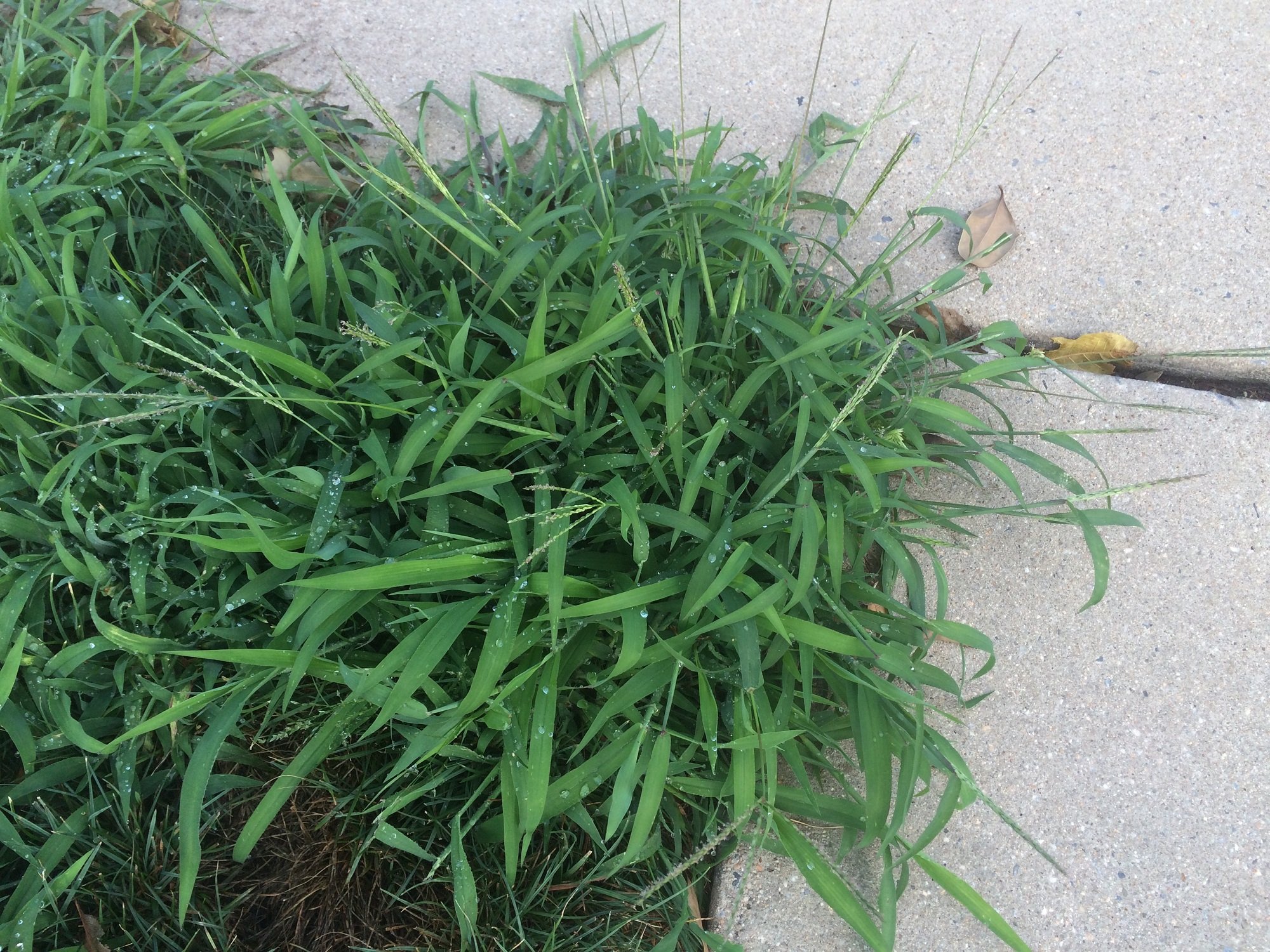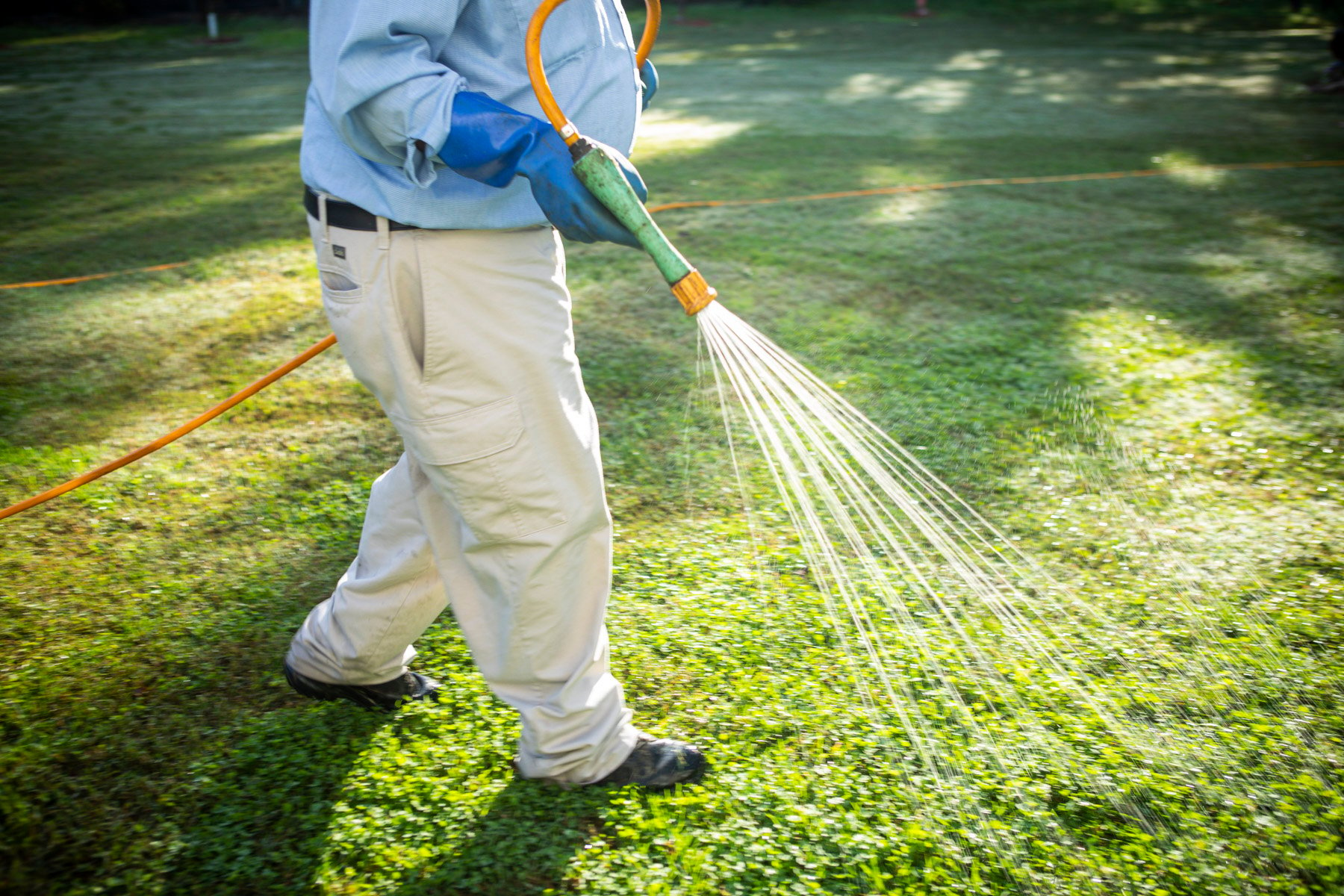When to Apply Crabgrass Preventer in Maryland
When the spring season starts, seeing that green lawn after months of gray winter days or even piles of snow can feel pretty magical.
That is until you see that spiky, stubborn grassy weed that sticks out like a sore thumb in your otherwise nice-looking lawn. It just got warm out; where did that sneaky weed even come from?
Yep, we’re talking about the weed you love to hate: crabgrass.
Crabgrass is one of the worst weeds in Maryland because it steals valuable nutrients and moisture from your lawn, making it more difficult for the grass you want to grow to fill in bare spots and thrive. And once it’s there, crabgrass is a tough and vigorous seed producer that loves hot, dry weather. It feels like a vicious cycle where crabgrass keeps sneaking in before the good grass has a chance, and you can’t win.
We understand how frustrating this can be. The goal: pre-emergent crabgrass control.
Use This Lawn Weed ID Tool to Spot Weeds in Your Lawn
Since crabgrass gets more powerful once it’s established, you want to stop it before it starts. Let’s talk about how to prevent this weed.
How to Prevent Crabgrass in Your Maryland Lawn
Let’s learn a little bit more about this nasty weed known as crabgrass.
First of all, it’s a summer annual grassy weed. It germinates from seed, lives its entire lifecycle during the spring and summer months and then dies off, leaving seeds behind to start the cycle all over again the next spring. Unfortunately, winter’s cold weather doesn’t kill those seeds either -- as many as 80,000 to 150,000 seeds annually. Ugh. That’s a lot of potential crabgrass lurking in your lawn.
Crabgrass is greedy for space. It wants in and will do whatever it takes to get there.
When you’re looking at how to prevent crabgrass, there are some strategies you can adopt to stay ahead of this overeager weed.
Start With Healthy Lawn Care
The best crabgrass preventer of all is a thick, green lawn.
We know it sounds simple, but it’s true. Crabgrass looks for weak spots first and foremost. If the lawn is stressed out, crabgrass will take advantage of that opportunity.
A thick, green lawn is made with proper mowing, fertilization, watering, and aeration.  For mowing, you want a 3.5- to 4-inch height. This is because a tall, thick lawn blocks the sun’s heat and light from reaching the crabgrass seeds and causing them to germinate. Crabgrass isn’t a shade lover, so this helps.
For mowing, you want a 3.5- to 4-inch height. This is because a tall, thick lawn blocks the sun’s heat and light from reaching the crabgrass seeds and causing them to germinate. Crabgrass isn’t a shade lover, so this helps.
With watering, your Maryland lawn likes a minimum of 1.5 inches of water each week. Rain and sun exposure can change this in different areas, but this is a good average to follow.
Then, in autumn, annual aeration and overseeding can help increase lawn density, making sure crabgrass doesn’t have as much of a chance to emerge.
We couldn’t put together our best tips for how to prevent crabgrass by not covering these basic facts about crabgrass.
Use a Crabgrass Preventer
You may have the healthiest, thickest lawn on the block. And that means you’re keeping a majority of those thousands and thousands of crabgrass seeds from germinating. Don’t underestimate the work you’ve done here. While we always tend to focus on those weeds that do sneak in, realize how much you’ve already prevented and pat yourself on the back.
If you know you have a weaker lawn that you’re working on strengthening, have had crabgrass problems in the past, or don’t even want to give crabgrass a way in, preventive treatments are great ways to limit this weed.
Understanding when to apply crabgrass preventer starts with knowing when crabgrass likes to rear its ugly head.
Crabgrass germinates when the soil temperatures in Maryland reach a consistent 56 to 58 degrees Fahrenheit. And this can be different for some areas over others depending on sun exposure. For instance, a south-facing hillside with the sun beating down on it will warm up faster than a north-facing slope in the shade.  Because weather, soil, and rain conditions can vary, Natural Green prefers to do two pre-emergent crabgrass control treatments. We like to get the first one down before April 1 and the second one down before May 1. That way, we’re catching all of these areas that may be reaching this crabgrass germination state at different times and providing a longer window of preventive control.
Because weather, soil, and rain conditions can vary, Natural Green prefers to do two pre-emergent crabgrass control treatments. We like to get the first one down before April 1 and the second one down before May 1. That way, we’re catching all of these areas that may be reaching this crabgrass germination state at different times and providing a longer window of preventive control.
Don’t Forget About Post-emergent Crabgrass Control
Mother Nature always delivers a mix of conditions each year. So even with the best efforts put forth, crabgrass may find a way.
You want to keep a post-emergent crabgrass control in your weed fighting arsenal for those times when you notice a weed or two sneak in after applying your preventive measures.  This doesn’t mean you’ve failed at your pre-emergent crabgrass control measures. Remember we’re working with hundreds of thousands of seeds here. All of your work in prevention is limiting those seeds each subsequent year, so the work will pay off and limit how much of this weed you have to tackle. But you should always be prepared for some situations out of your control.
This doesn’t mean you’ve failed at your pre-emergent crabgrass control measures. Remember we’re working with hundreds of thousands of seeds here. All of your work in prevention is limiting those seeds each subsequent year, so the work will pay off and limit how much of this weed you have to tackle. But you should always be prepared for some situations out of your control.
That’s where post-emergent spot treatments can kill those weeds and stop them from producing more seeds at the end of the summer.
Stop Crabgrass Before It Starts
Getting outside to enjoy the sunshine and warmer weather is priority No. 1 in spring. Don’t let crabgrass ruin your plans and get you down.
We know how it feels. But there are ways you can take control of this weed and keep it out of your yard. It may sound time-consuming, and we know you have other things to worry about. For instance, you might get a bit distracted and forget when pre-emergent crabgrass control is needed or what fertilization schedule can best get you that thicker, greener lawn.
That’s where we come in. We have decades of experience in Central and Southern Maryland lawn care, and we’ve seen more than our fair share of crabgrass. We’re happy to take this worry off of your mind and fight your weed battles. You can even take the credit.
Give Natural Green a call or request a free quote and we’ll bring our proven crabgrass control experience and create a custom plan for your Central and Southern Maryland lawn.
When the spring season starts, seeing that green lawn after months of gray winter days or even piles of snow can feel pretty magical.
That is until you see that spiky, stubborn grassy weed that sticks out like a sore thumb in your otherwise nice-looking lawn. It just got warm out; where did that sneaky weed even come from?
Yep, we’re talking about the weed you love to hate: crabgrass.
Crabgrass is one of the worst weeds in Maryland because it steals valuable nutrients and moisture from your lawn, making it more difficult for the grass you want to grow to fill in bare spots and thrive. And once it’s there, crabgrass is a tough and vigorous seed producer that loves hot, dry weather. It feels like a vicious cycle where crabgrass keeps sneaking in before the good grass has a chance, and you can’t win.
We understand how frustrating this can be. The goal: pre-emergent crabgrass control.
Use This Lawn Weed ID Tool to Spot Weeds in Your Lawn
Since crabgrass gets more powerful once it’s established, you want to stop it before it starts. Let’s talk about how to prevent this weed.
How to Prevent Crabgrass in Your Maryland Lawn
Let’s learn a little bit more about this nasty weed known as crabgrass.
First of all, it’s a summer annual grassy weed. It germinates from seed, lives its entire lifecycle during the spring and summer months and then dies off, leaving seeds behind to start the cycle all over again the next spring. Unfortunately, winter’s cold weather doesn’t kill those seeds either -- as many as 80,000 to 150,000 seeds annually. Ugh. That’s a lot of potential crabgrass lurking in your lawn.
Crabgrass is greedy for space. It wants in and will do whatever it takes to get there.
When you’re looking at how to prevent crabgrass, there are some strategies you can adopt to stay ahead of this overeager weed.
Start With Healthy Lawn Care
The best crabgrass preventer of all is a thick, green lawn.
We know it sounds simple, but it’s true. Crabgrass looks for weak spots first and foremost. If the lawn is stressed out, crabgrass will take advantage of that opportunity.
A thick, green lawn is made with proper mowing, fertilization, watering, and aeration.  For mowing, you want a 3.5- to 4-inch height. This is because a tall, thick lawn blocks the sun’s heat and light from reaching the crabgrass seeds and causing them to germinate. Crabgrass isn’t a shade lover, so this helps.
For mowing, you want a 3.5- to 4-inch height. This is because a tall, thick lawn blocks the sun’s heat and light from reaching the crabgrass seeds and causing them to germinate. Crabgrass isn’t a shade lover, so this helps.
With watering, your Maryland lawn likes a minimum of 1.5 inches of water each week. Rain and sun exposure can change this in different areas, but this is a good average to follow.
Then, in autumn, annual aeration and overseeding can help increase lawn density, making sure crabgrass doesn’t have as much of a chance to emerge.
We couldn’t put together our best tips for how to prevent crabgrass by not covering these basic facts about crabgrass.
Use a Crabgrass Preventer
You may have the healthiest, thickest lawn on the block. And that means you’re keeping a majority of those thousands and thousands of crabgrass seeds from germinating. Don’t underestimate the work you’ve done here. While we always tend to focus on those weeds that do sneak in, realize how much you’ve already prevented and pat yourself on the back.
If you know you have a weaker lawn that you’re working on strengthening, have had crabgrass problems in the past, or don’t even want to give crabgrass a way in, preventive treatments are great ways to limit this weed.
Understanding when to apply crabgrass preventer starts with knowing when crabgrass likes to rear its ugly head.
Crabgrass germinates when the soil temperatures in Maryland reach a consistent 56 to 58 degrees Fahrenheit. And this can be different for some areas over others depending on sun exposure. For instance, a south-facing hillside with the sun beating down on it will warm up faster than a north-facing slope in the shade.  Because weather, soil, and rain conditions can vary, Natural Green prefers to do two pre-emergent crabgrass control treatments. We like to get the first one down before April 1 and the second one down before May 1. That way, we’re catching all of these areas that may be reaching this crabgrass germination state at different times and providing a longer window of preventive control.
Because weather, soil, and rain conditions can vary, Natural Green prefers to do two pre-emergent crabgrass control treatments. We like to get the first one down before April 1 and the second one down before May 1. That way, we’re catching all of these areas that may be reaching this crabgrass germination state at different times and providing a longer window of preventive control.
Don’t Forget About Post-emergent Crabgrass Control
Mother Nature always delivers a mix of conditions each year. So even with the best efforts put forth, crabgrass may find a way.
You want to keep a post-emergent crabgrass control in your weed fighting arsenal for those times when you notice a weed or two sneak in after applying your preventive measures.  This doesn’t mean you’ve failed at your pre-emergent crabgrass control measures. Remember we’re working with hundreds of thousands of seeds here. All of your work in prevention is limiting those seeds each subsequent year, so the work will pay off and limit how much of this weed you have to tackle. But you should always be prepared for some situations out of your control.
This doesn’t mean you’ve failed at your pre-emergent crabgrass control measures. Remember we’re working with hundreds of thousands of seeds here. All of your work in prevention is limiting those seeds each subsequent year, so the work will pay off and limit how much of this weed you have to tackle. But you should always be prepared for some situations out of your control.
That’s where post-emergent spot treatments can kill those weeds and stop them from producing more seeds at the end of the summer.
Stop Crabgrass Before It Starts
Getting outside to enjoy the sunshine and warmer weather is priority No. 1 in spring. Don’t let crabgrass ruin your plans and get you down.
We know how it feels. But there are ways you can take control of this weed and keep it out of your yard. It may sound time-consuming, and we know you have other things to worry about. For instance, you might get a bit distracted and forget when pre-emergent crabgrass control is needed or what fertilization schedule can best get you that thicker, greener lawn.
That’s where we come in. We have decades of experience in Central and Southern Maryland lawn care, and we’ve seen more than our fair share of crabgrass. We’re happy to take this worry off of your mind and fight your weed battles. You can even take the credit.
Give Natural Green a call or request a free quote and we’ll bring our proven crabgrass control experience and create a custom plan for your Central and Southern Maryland lawn.


